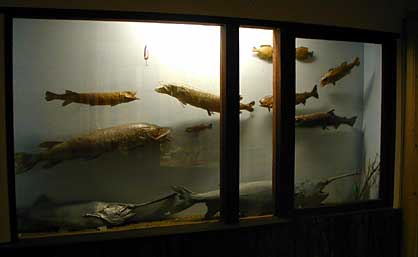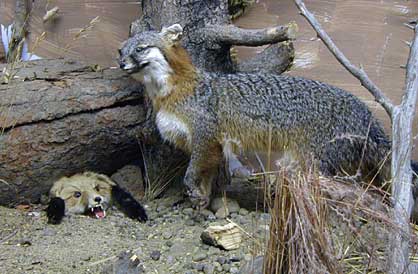
You might assume that the deliberate staging of the animal's appearance makes the entire article a fake or fabrication. And indeed, in the case of the soft-scaled fishes, the mount is simply a re-creation made from molds taken of the original lifeless fish without using the skin of the original fish. But in most cases the work succeeds from it's direct connection to life. It is convincing as a real animal because its pedigree is real, its skin lived and walked the earth like all of us. A display made without a real animal can only be a replica, a mannequin, a fake representation of the real world.Think of the the stuffed animal as a sort of "life photograph," a still representation of only the outward appearance of the creature. Like the photograph, the literalness of the image does not always reveal its inner nature. The most fascinating representations see something more. This may be the guiding hand of a master artist, or maybe it is something that succeeds despite all the artist's intentions. Whatever life or spirit exudes from these entirely dead creatures is a wonder nonetheless.
Like a photograph, the taxidermy mount is a image or residual of a moment, frozen by technological means. The forces that hold the creature still are an equal and opposite tension between the wild impermanence of nature and the confining, defining desires of civilization. When these forces are evenly matched, the fleeting scenes and moments of time stop their flight. With a few props and a painted canvas backdrop, the frozen creature is now at home in its capsule environment.


